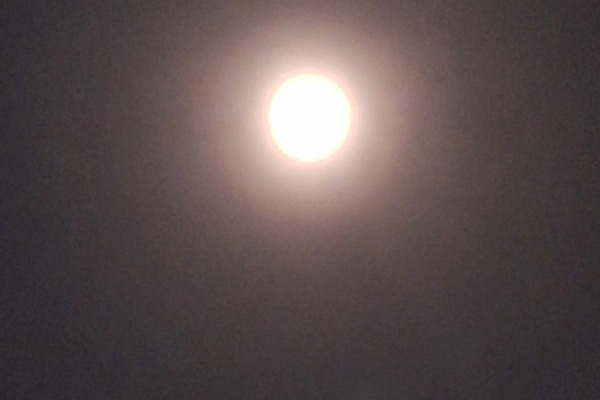2024 PT5 became earth's second moon

[The moon. Photo credit: Chloe Choi]
On September 30, 2024, Earth captured an asteroid, 2024 PT5, which will orbit around earth until November 25th.
This asteroid, 2024 PT5, hails from the Arjuna Asteroid Belt, a dynamical group of asteroids within our solar system.
2024 PT5 is classified as a Near-Earth Object (NEO) - Apollo. NEO is defined by the International Astronomical Union as ‘small solar system bodies with orbits around the sun that are at least partially closer than 1.3 astronomical units (AU - distance from Sun to Earth).
Roughly eleven meters in diameter, 2024 PT5 was discovered by ATLAS South Africa, Sutherland on August 7, 2024, just a day before it started its approach toward Earth.
Upon passing just outside of Earth's Hill Sphere, the asteroid was temporarily captured by Earth's gravity around September 30, 2024.
The 2024 PT5 will orbit the earth until November 25, and during this less-than-two-months period, earth will welcome its new, albeit temporary, moon.
Is the occurrence of earth's “second moon” a once-in-a-lifetime rarity? Barely; Earth has hosted numerous ‘second moons’ in its history that humans weren't aware of.
Since the ‘discovery’ of the moon in prehistoric times, sightings of secondary moons were not recorded until February 9, 1913, with the 1913 Great Meteor Procession.
The discovery of the 1913 Great Meteor Procession marked the first recorded ‘second moon’ sighting.
Following the discovery of the 1913 Great Meteor Procession, there have been at least 30 suspected (as well as confirmed) second-moons, the most recent discovery being the 2024 PT5.
Can we predict if an asteroid will become a second moon? As of now, that is not possible- no one predicted that 2024 PT5 would become a second moon at the time of its discovery.
It is also worth noting that not every asteroid found becomes a second moon, or even starts to approach earth so soon after its discovery. There are also cases when asteroids had been a second moon for a long time without anyone realizing.
For instance, the 2022 NX1 had become a second moon from June 11, 2022 to July 3rd, 2022, but it had only been discovered by Moonbase South Observatory on July 2nd, 2022, the day before its departure.
So, are these temporary second moons lost forever after their time around earth? Not really.
Although asteroids such as the 1993 Great Meteor Procession, which had been destroyed, will not be seen again, there are very good chances for previous second moons to return for round 2 (or even 3) in the future.
For instance, the 2022 NX1 had already been a temporary moon during its 2022 discovery, having been near earth on January 16, 1981 without anyone realizing.
The 2022 NX1 is also expected to return as a temporary second moon (unless it gets destroyed beforehand) in December 2051, making it its 3rd time as a second moon.
Unfortunately, all second moons are not observable with the naked eye- as all second-moons are only roughly 10 meters in size, a professional-grade telescope is needed to spot them in the sky.
Even still, it is quite exciting how we have gotten a second moon multiple times before, and will continue to receive more as our temporary second moons.
The 2024 PT5 won't be the last second moon, so let's keep an eye out for future second moons!

- Chloe Yeona Choi / Grade 9
- Saint Paul Preparatory Seoul

![THE HERALD STUDENT REPORTERS [US]](/assets/images/logo_student_us.png)
![THE HERALD STUDENT REPORTERS [Canada]](/assets/images/logo_student_ca.png)
